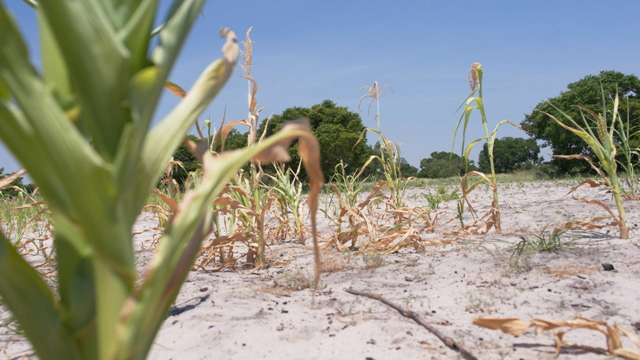
By Lawrence Paganga
Authorities in several regions of Namibia have put in place several measures to mitigate the effects of an expected drought in the country as the rainfall pattern remains low than expected.
Most regions in the country, including Kunene, Oshana, Omusati, Kharas, Hardap, and Oshikoto, have experience poor rains this summer farming season.
This has seriously affected summer planting and livestock production for the local farmers.
Vice-chairperson of the Welwitchia Farmers Union, Samuel Tsuseb, said the dry conditions had created operational challenges for the farmers in the Kunene region, especially for livestock production.
Some of the livestock farmers in Kunene are struggling to buy supplement stock feed as water levels have already dwindled, and the situation is not looking bright.
“There is no rainy season at all. We are hoping to get rains in the coming months,” Tsuseb said.
He predicted it would be disastrous for the cattle if the rains did not fall before March in the region.
However, the Namibia Meteorological Services deputy director, Simon Dirkse, was optimistic Namibia would have good rains in the early months of 2022.
But for the last seven years, Namibia has been experiencing crippling droughts each year, which have threatened food security at the household level.
Dirkse said the rains were confined to the north-eastern parts of Namibia, including the Zambezi, Kavango East and West, and the Otjozondjupa regions.
However, he said his office was expecting rains to spread to the greater part of the country starting this weekend.
“The onset of the rains has been delayed for the beginning of the year, but we expect it to break over the weekend. We are not worried about the drought prolonging, as we are expecting good rainfall,” Dirkse said.
A report by the Meteorological Services Department also said it expected good rains in the early months of 2022.
“Should seasonal predictions become a reality for most parts of the country, we expect improvement in pasture conditions for livestock and reduced pressure on irrigated and dry-land crop production, which ultimately strengthens production output and farmers cash flow positions,” the report said.
“As we look forward to positive updates on national rainfall forecasts from the Namibia Meteorological Services, farmers are urged to prepare for all possible outcomes of below, normal, and above normal rainfall.”
However, Oshana governor Elia Irimari is not that optimistic and has ordered the Oshana regional council to hold a meeting to put measures in place and prepare for possible drought this year.
“There is plenty of grass in that area and we have installed taps and pumps for animals to have water and for the local residents,” Irimari said.
The governor for Omusati, Erginus Endjala said the region had received funds from the government to drill boreholes in the region in December last year, and the Agriculture Ministry had also provided money for the region to have a feedlot at Ruacana for the farmers’ livestock.
“The feedlot will be used by farmers to procure feed for their animals. This is the permanent measure that will be in place to mitigate the issue of animal drought in the future.”
Endjala also says provision must be made for those who were affected by veld fires, mostly in the western part of the region.
“It is obvious that these people will not survive easily, so we need a budgetary provision to serve the farmers and their animals.”
however, in the Oshikoto region, the governor Penda Ya Ndakolo said the regional council had not yet received any government funding.
“There was no budget allocated for animal supplementary feeds. We will meet with other regional councils, local authorities, and other stakeholders to see how we will tackle the issue of drought in the region,” Ya Ndakolo said.
permanent basis,” Frederick says.
However, farmers said they remained bullish, and remained hopeful they would receive good rains.
Fillemon Kapale, a farmer in the Otjozondjupa region, said he had delayed planting his crop not to waste resources.
“We want to plough, but as it stands I can’t use the little money I have and not get anything out if the rains don’t come. I have planted on only two hectares for now but if it does rain, I will continue,” he added.
Agriculture Ministry officers in the Hardap region have started training livestock and crop farmers in climate-smart farming techniques to cushion them against the prolonged drought.
“There are techniques, such as hydroponic fodder production, which would make farmers less dependent on actual grass as they can produce fodder quicker and in a sustainable manner which they can control,” the ministry said.
However, the Office of the Prime Minister (OPM) said it had not yet made plans to mitigate the mitigate against the looming drought.
The OPM executive director, I-Ben Nashandi, remains hopeful that it will rain soon.
“It’s about survival at the moment, as people are still dependent on last year’s harvest to sustain their livelihood,” he said.







